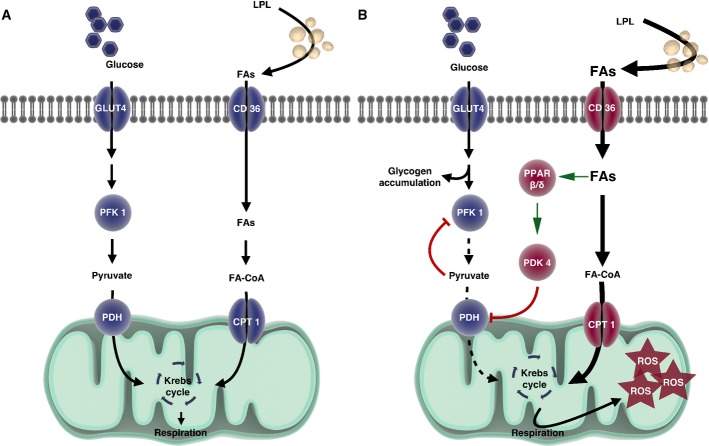Figure 9.
- Under normal conditions in WT mice, both glucose and lipids enter the cell and are used as cellular fuels. In this situation, both pathways are used and are driven by PDK4 according to needs and fuel availability.
- In the case of ALS, metabolic flexibility is lost because of chronically increased PDK4 and subsequent inhibition of PDH and PFK1 leading to glycogen accumulation. Increased lipid use through β-oxidation that can only function under aerobic conditions may underlie the greater endurance capacity in SOD1G86R mice. With time, the cell produces more reactive oxygen species, thereby inducing cellular damage.
Data information: CD36, CD36 antigen/fatty acid translocase, CPT1, carnitine palmitoyl transferase 1, FAs, fatty acids, FA-CoA, acyl-fatty acids, GLUT4, glucose transporter 4, LPL, lipoprotein lipase, PDH, pyruvate dehydrogenase complex, PDK4, pyruvate dehydrogenase kinase 4, PFK1, phosphofructokinase 1, ROS, reactive oxygen species. Drawing was performed with the website Somersault1824 (http://www.somersault1824.com).

